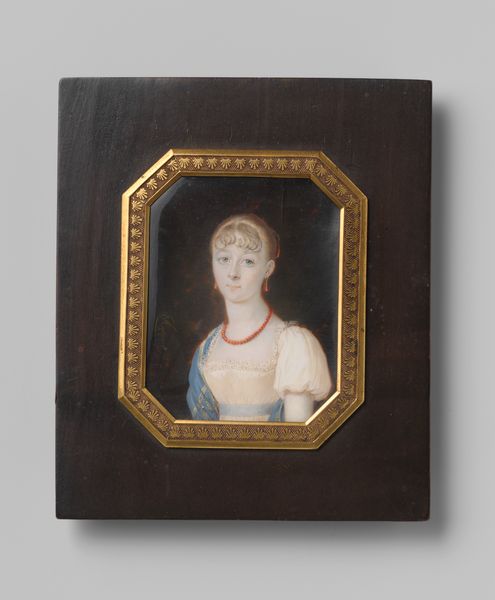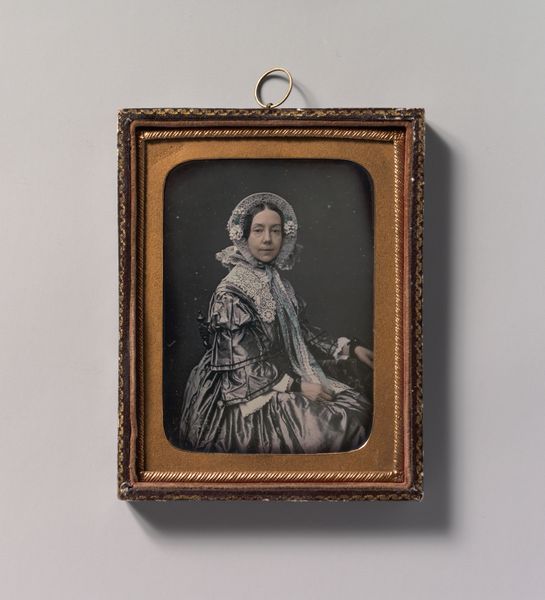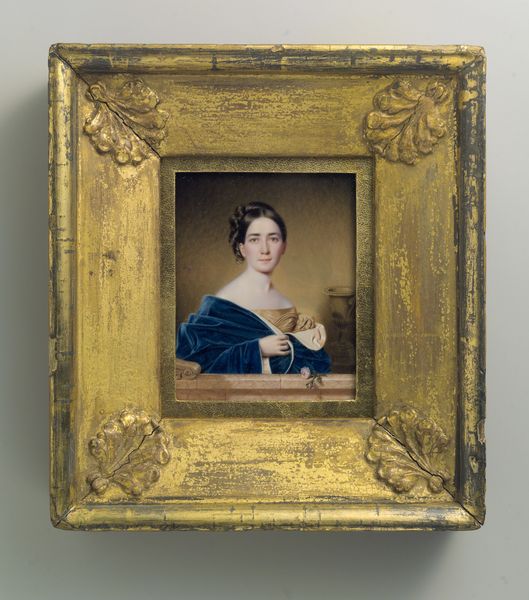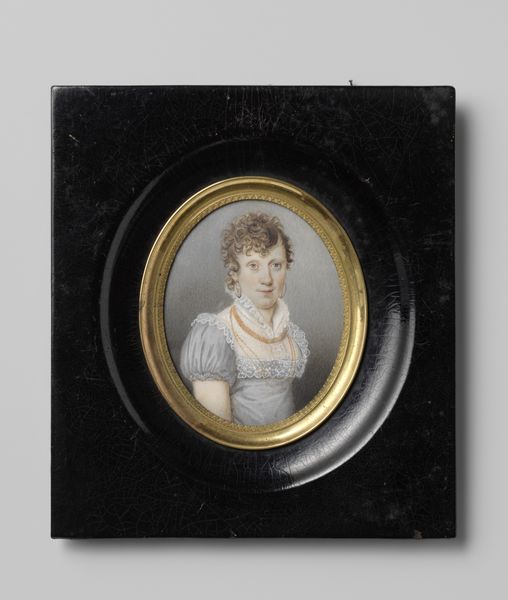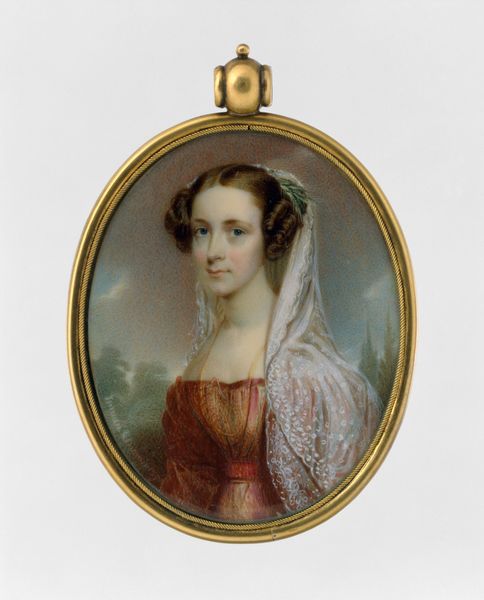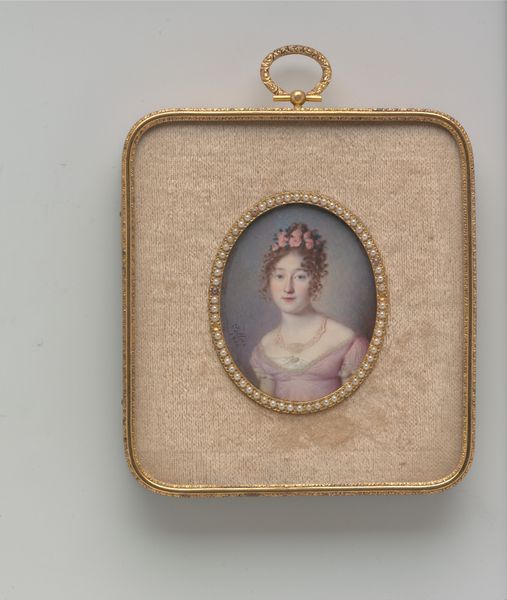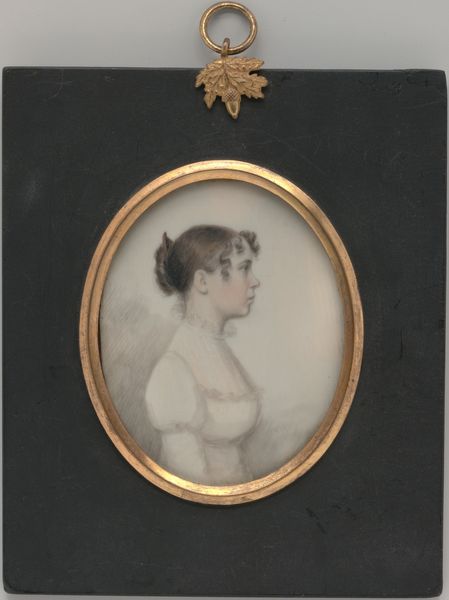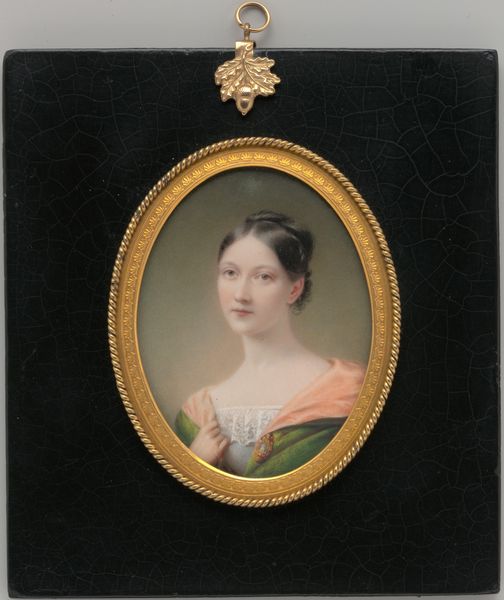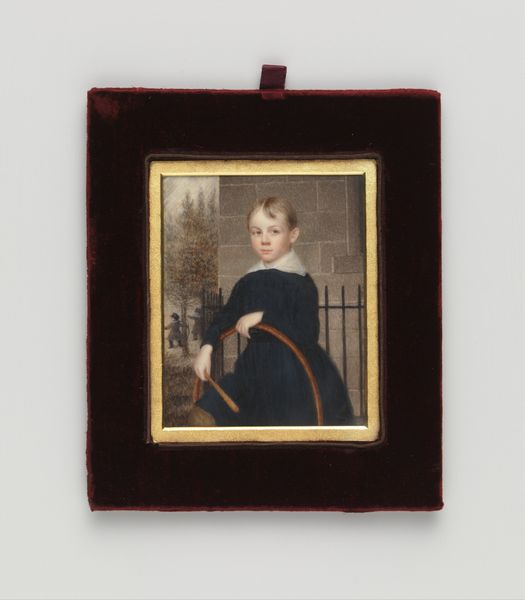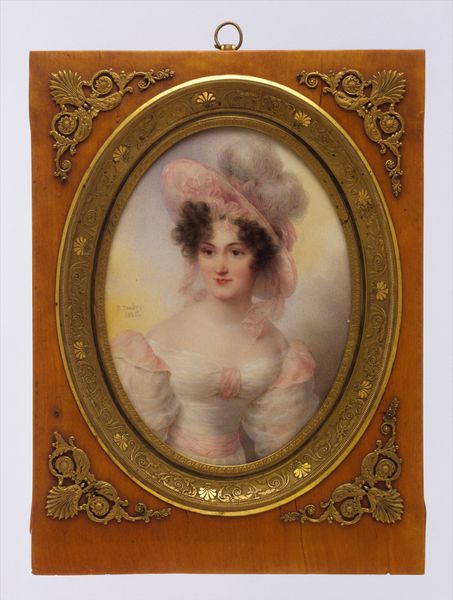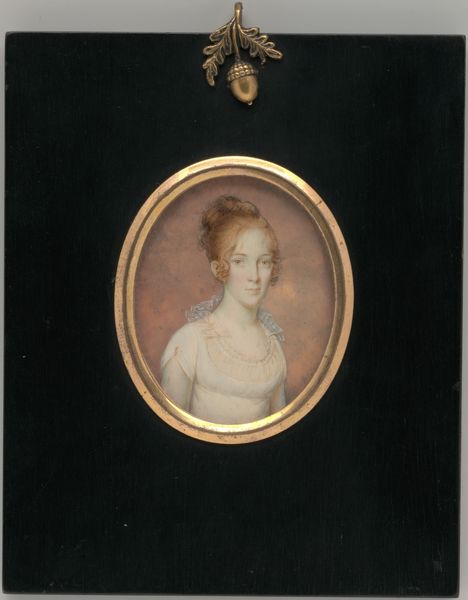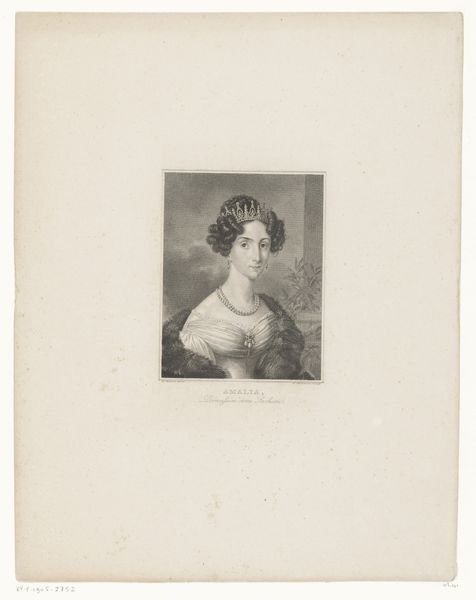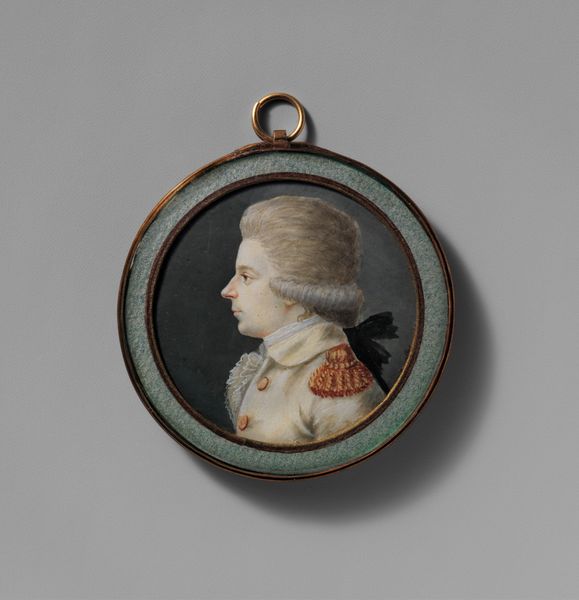
tempera, painting
#
portrait
#
tempera
#
painting
#
romanticism
#
academic-art
#
miniature
Dimensions: 3 1/8 x 2 1/2 in. (7.9 x 6.3 cm)
Copyright: Public Domain
Editor: This is "Eugenie Simon," a tempera on ivory painting from 1827 by Louis Antoine Collas. It's a miniature portrait, and I'm immediately struck by the subject's direct gaze and the formality of the setting despite the painting's small scale. What do you see in this piece, especially considering the context of its time? Curator: It's fascinating to consider miniature portraits like this as powerful tools of self-representation, especially for women in the 19th century. Beyond the obvious display of wealth and status, these intimate objects served as a way to negotiate identity within a patriarchal society. Her direct gaze, as you pointed out, challenges the idea of women as passive subjects. Who do you think was the target audience for such personal artworks? Editor: Possibly family or close friends, as a keepsake? I hadn’t really thought about the agency it might give the subject to commission something like this! Curator: Exactly. And consider the material: ivory, a precious commodity obtained through colonial exploitation. Even the seemingly innocent choice of materials reveals a complex web of power dynamics. The "Romantic" style further emphasized the subject's perceived virtues, aligning her with contemporary ideals of femininity but on whose terms? It urges questions about identity performance within constricting cultural norms. Do you see the traces of societal expectation in her depiction? Editor: Now that you mention it, the idealized features and formal dress seem less about individuality and more about adhering to societal expectations of beauty and decorum. Curator: Precisely. This piece, like so many artworks, exists as a site of negotiation between individual expression and societal constraint. It is also a symbol of access only those in higher society can reach. Editor: That's a completely different way of looking at it than I would have on my own. Thanks for pointing out the context in society at the time. Curator: My pleasure. Art holds many voices and the most compelling ones encourage intersectional discussions of art in history.
Comments
No comments
Be the first to comment and join the conversation on the ultimate creative platform.
